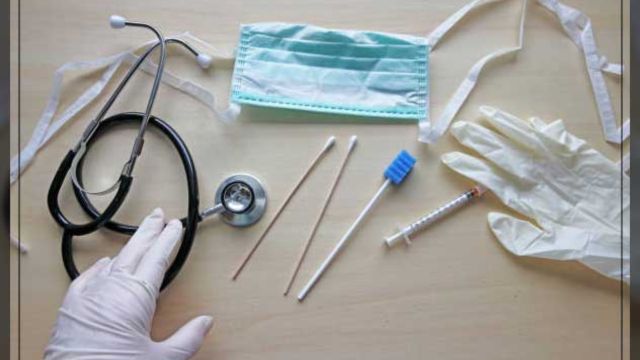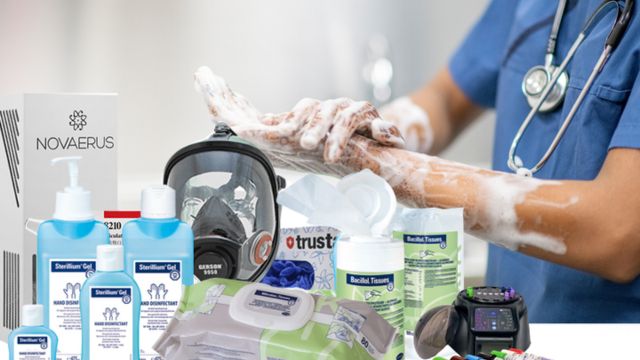Key elements of healthcare delivery, infection control and prevention guard patients, medical professionals, and the community against the spread of infectious diseases. Proper utilisation of medical supplies is one of the most important elements in good infection control. These products not only help with daily medical operations but also provide the front line protection against infections in clinical environments. The vital part medical supplies play in infection control and prevention is discussed in this article together with important goods, their applications, and best practices to reduce infection risks.
Understanding Infection Control and Prevention
In the context of healthcare contexts like hospitals, clinics, and long-term care institutions, infection control is policies and practices applied to stop the transmission of diseases. It comprises a spectrum of techniques meant to lower the danger of infection spread: hygienic standards, sterilisation, isolation procedures, and protective gear use.
Since healthcare-associated infections (HAIs) could cause major difficulties, extended hospital stays, higher healthcare expenses, and even mortality, prevention is absolutely vital. Thus, medical supplies are essential for these plans since they serve as tools to keep sterile surroundings, disinfectants, and barriers as well as agents.
Key Medical Supplies in Infection Control
1. Personal Protective Equipment (PPE)
First line of protection against infectious agents is personal protective gear includes gloves, masks, gowns, face shields and goggles. PPE guards medical professionals against respiratory droplets, bloodborne diseases, and other pollutants.
-
Gloves: Disposable gloves prevent direct contact with blood, bodily fluids, and contaminated surfaces. Different types, such as nitrile, latex, and vinyl, are selected based on specific tasks and allergy considerations.
-
Masks and Respirators: Surgical masks reduce the spread of respiratory droplets, while respirators like N95 masks provide higher filtration for airborne pathogens.
-
Gowns and Aprons: These protect clothing and skin from contamination during procedures with high exposure risk.
-
Eye Protection: Goggles and face shields guard against splashes and sprays.
Proper donning and doffing of PPE are crucial to avoid contamination, making training an essential part of infection control.
2. Sterilization and Disinfection Supplies
Sterilization eliminates all forms of microbial life on instruments and surfaces, while disinfection reduces microbial presence to safe levels.
-
Sterilizers and Autoclaves: These devices use steam or chemicals to sterilize surgical tools and reusable equipment.
-
Disinfectants: Solutions such as alcohol, chlorine-based products, and quaternary ammonium compounds clean surfaces and non-critical equipment.
-
Cleaning Supplies: Towels, wipes, brushes, and detergents facilitate thorough cleaning before disinfection or sterilization.
Using the right supplies with proper techniques ensures that pathogens do not survive on medical devices or in patient environments.
3. Disposable Medical Supplies
Single-use disposables reduce cross-contamination risks by being discarded after one use.
-
Syringes and Needles: Prevent transmission of bloodborne pathogens when used only once.
-
Catheters and Tubes: Disposable versions minimize infection risks associated with repeated use.
-
Wound Dressings and Bandages: Sterile and disposable dressings prevent infections at wound sites.
4. Hand Hygiene Products
Hand hygiene is the cornerstone of infection control.
-
Hand Sanitizers: Alcohol-based sanitizers effectively kill many pathogens and are convenient where soap and water are unavailable.
-
Soap and Antimicrobial Soaps: Essential for physically removing dirt and microbes.
-
Handwashing Stations: Accessible sinks with proper supplies promote frequent handwashing among healthcare workers.
The Impact of Medical Supplies on Infection Prevention

Medical supplies chosen and used properly drastically lower infection rates. For instance, regular hand washing and glove use help to reduce pathogen transfer between patients and healthcare staff. Disposable supplies remove the possibility of cross-contamination from re-used objects. Supplies of sterilisation help to keep surgical tools sterile, therefore avoiding post-operative infections.
Furthermore, the explosive demand for PPE during pandemics like COVID-19 emphasises how important these supplies are in shielding patients and front-line personnel.
Best Practices in Using Medical Supplies for Infection Control
-
Adequate Training: Healthcare workers must be trained on the correct use, donning, and doffing of PPE and other infection control supplies.
-
Quality Assurance: Supplies should meet regulatory standards to ensure effectiveness.
-
Inventory Management: Adequate stock levels prevent shortages during critical times.
-
Waste Management: Proper disposal protocols for used supplies reduce contamination and environmental hazards.
-
Regular Audits: Monitoring the use of supplies and compliance with infection control policies improves safety outcomes.
Challenges and Innovations
Although medical supplies are vital, problems including shortages, fake goods, and incorrect use can compromise efforts at infection control. Emerging to solve these problems and improve protection are innovations such automated disinfection systems, reusable sterilisable PPE, and antimicrobial gloves.
Conclusion
Acting as essential tools that safeguard patients and healthcare personnel both, medical supplies are very vital in infection control and prevention. From PPE to sterilising equipment and disposables, their proper use guarantees safer healthcare surroundings and helps to break the chain of infection transmission. Embracing new technologies, following best practices, and ongoing education can help to further battle infections, thereby enhancing patient outcomes and public health.








